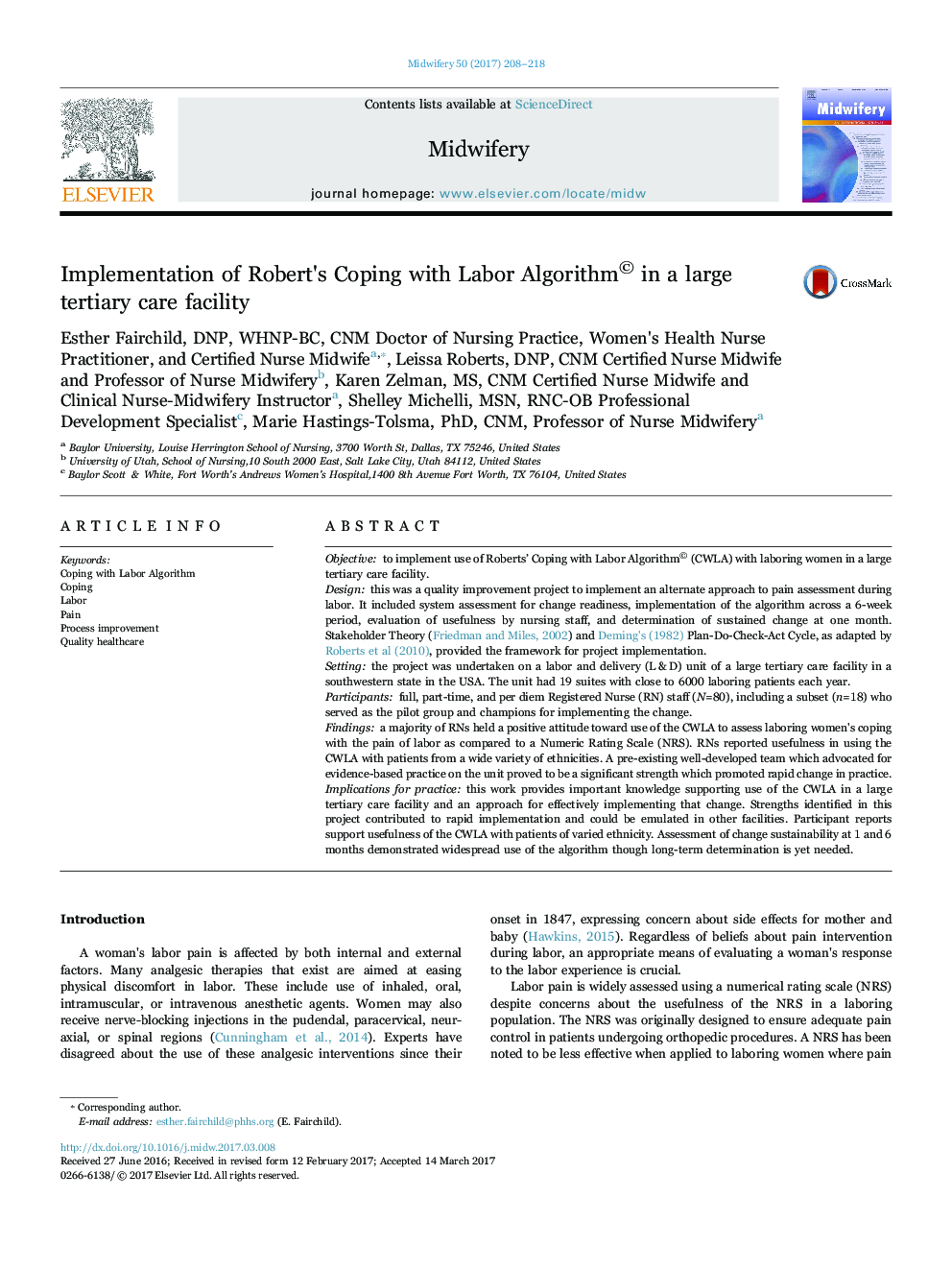| Article ID | Journal | Published Year | Pages | File Type |
|---|---|---|---|---|
| 5122371 | Midwifery | 2017 | 11 Pages |
â¢Coping with pain during labor is the goal - not necessarily elimination of pain.â¢CWLA use allowed for ease in the assessment of coping with labor by women.â¢RNs note that tool use provides helpfulness, clarification, and documentation ease.â¢CWLA was useful in determining how women of varied ethnicity coped with labor.â¢An existing evidence-based team proved crucial in implementing use of the CWLA.
Objectiveto implement use of Roberts' Coping with Labor Algorithm© (CWLA) with laboring women in a large tertiary care facility.Designthis was a quality improvement project to implement an alternate approach to pain assessment during labor. It included system assessment for change readiness, implementation of the algorithm across a 6-week period, evaluation of usefulness by nursing staff, and determination of sustained change at one month. Stakeholder Theory (Friedman and Miles, 2002) and Deming's (1982) Plan-Do-Check-Act Cycle, as adapted by Roberts et al (2010), provided the framework for project implementation.Settingthe project was undertaken on a labor and delivery (L&D) unit of a large tertiary care facility in a southwestern state in the USA. The unit had 19 suites with close to 6000 laboring patients each year.Participantsfull, part-time, and per diem Registered Nurse (RN) staff (N=80), including a subset (n=18) who served as the pilot group and champions for implementing the change.Findingsa majority of RNs held a positive attitude toward use of the CWLA to assess laboring women's coping with the pain of labor as compared to a Numeric Rating Scale (NRS). RNs reported usefulness in using the CWLA with patients from a wide variety of ethnicities. A pre-existing well-developed team which advocated for evidence-based practice on the unit proved to be a significant strength which promoted rapid change in practice.Implications for practicethis work provides important knowledge supporting use of the CWLA in a large tertiary care facility and an approach for effectively implementing that change. Strengths identified in this project contributed to rapid implementation and could be emulated in other facilities. Participant reports support usefulness of the CWLA with patients of varied ethnicity. Assessment of change sustainability at 1 and 6 months demonstrated widespread use of the algorithm though long-term determination is yet needed.
